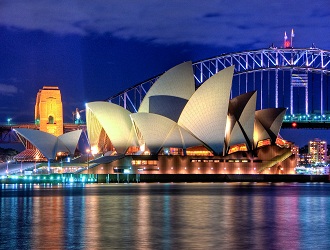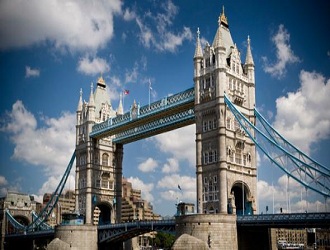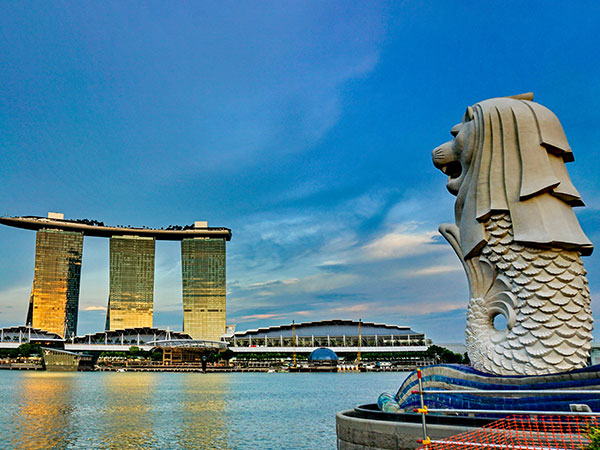



Australia, the smallest continent and one of the largest countries on Earth. Australia is a popular destination for international students seeking a high-quality education, a vibrant cultural experience, and stunning natural beauty, with its top-ranked universities and diverse courses making it an ideal platform for academic and career goals. Study destination in Australia, consider popular cities like Melbourne and Sydney, known for their vibrant culture, academic excellence, and diverse opportunities for international students.
Australia continues to welcome international students, although with a cap on new enrollments for 2025 at 270,000. Australia is a very safe country to visit. The country has a stable political system and a low crime rate, and Australians generally experience a safe lifestyle. However, you should observe the same precautions with your personal safety and possessions as you would when travelling anywhere, whether at home or overseas.
Geographical Overview: Australia is a country located in the southern hemisphere, surrounded by the Pacific and Indian Oceans. It is renowned for its stunning natural landmarks, diverse landscapes, and unique wildlife.
Cultural and Economic Centers: Sydney and Melbourne serve as the primary cultural and economic hubs of Australia, known for their vibrant arts scenes, diverse culinary offerings, and bustling city life.
Population and Regions: With a population of approximately 25 million people, Australia is sparsely populated, with the most populous regions being Victoria, Queensland, and New South Wales.
Natural Landmarks: Australia is often referred to as the “Oldest continent” and is home to many fascinating natural landmarks, including iconic sites such as Uluru, the Great Barrier Reef, and the vast Outback.
Studying MBBS in Australia offers a high-quality, globally recognized medical education with strong practical training, modern infrastructure, and excellent job prospects, making it a compelling option for aspiring doctors.
Australia, there are a total of 21 medical schools available for aspiring students to attend. These include 9 undergraduate programs and 13 graduate entry options.
If you’re looking for a country with a medical education system similar to Australia’s MBBS program, New Zealand and Canada are often cited as good alternatives.
Follow the quick facts for MBBS in Australia:
| Degree Awarded | MBBS |
| UCAT | Yes, Required |
| NEET Exam | Yes, Compulsory |
| IELTS/TOEFL | Yes, Compulsory |
| Course Duration | 6 years (including internship) |
| Recognition | NMC/WHO |
| Annual Fees | Starts from 6 lakhs |
| Language of Teaching | English |
1. Age: Minimum 17 years old.
2. Higher Secondary Education: Complete 10+2 (or equivalent) from a recognized board, with Physics, Chemistry, and Biology as primary subjects.
3. English Language Proficiency: Demonstrate proficiency through tests like IELTS (minimum score of 7.0) or TOEFL.
4. NEET: Required for Indian students to obtain a Bachelor’s level of education in Australia.
| 1 | University of Melbourne |
| 2 | University of Sydney |
3 | University of Queensland |
| 4 | Monash University |
| 5 | The University of Adelaide |
| 6 | University Of New South Wales |
| 7 | Australian National University |
| 8 | University of Western Australia |
| 9 | University of Newcastle |
| 10 | Deakin University |
| 11 | James Cook University |
| 12 | University of Tasmania |
| 13 | Bond University |
| 14 | Curtin University Bentley |
| 15 | Flinders University |
| 16 | Griffith University, Nathan Campus |
| 17 | Western Sydney University |
| 18 | Macquarie University |
| 19 | ANU Medical School |
| 20 | Adelaide University |
The syllabus for the MBBS course in Australian medical colleges is given below:
| First Year | Second Year |
|---|---|
| Fundamentals of Psychology | Human Anatomy |
| Histology | Physiology |
| Bioorganic Chemistry | Biochemistry |
| Embryology | Histology |
| Human Anatomy | Microbiology |
| Cytology | Patient Care |
| Medical Chemistry | Embryology |
| Elective Courses | Emergency Medicine |
| Third Year | Fourth Year |
|---|---|
| Pharmacology | Tuberculosis |
| Internal Medicine Path morphology | Ophthalmology |
| Pediatrics | Surgery |
| Ecology | Narcology |
| General Surgery | Neurology |
| Path morphology | Urology |
| Biostatistics | Forensic Medicine |
| Elective Courses | Obstetrics and Gynecology |
| Radiology | Medical Psychology |
| – | Social Medicine |
| Fifth Year | Sixth Year |
|---|---|
| Obstetrics | General Practice |
| Social Medicine | Elective courses |
| Gynecology | – |
| Medical | – |
| Epidemiology | – |
| Traumatology | – |
| Infectious Diseases | – |
| Genetics Oncology | – |
| Clinical Immunology | – |
The duration of the MBBS program typically spans 5-6 years, encompassing a diverse range of subjects such as Medical Chemistry, Physiology, Microbiology, Patient Care, Epidemiology, Medical Genetics, Oncology, Gynecology and more.
1. Research and Selection: Identify the Australian universities offering MBBS programs that align with your interests and requirements.
2. Prepare Application Documents: Gather all necessary documents, including transcripts, certificates, letters of recommendation, English proficiency scores, and entrance exam scores.
3. Submit Applications: Apply through the respective university’s official website, following their specific guidelines and deadlines.
4. Interviews and Further Assessments: Some universities may require interviews or further assessments to evaluate your suitability for the program.
5. Offer Letter and Acceptance: Once shortlisted, you’ll receive an offer letter from the university, which you can then accept.
6. Visa Application: Apply for a student visa to study in Australia, ensuring you meet all the requirements.
7. Pre-Departure and Orientation: Prepare for your move to Australia, including arranging accommodation, health insurance, and attending pre-departure orientation programs.
Academic Documents:
1. Transcripts and Certificates
2. Entrance Exam Scores
3. English Language Proficiency
Personal Documents
1. Passport
2. Birth Certificate
3. Passport-size Photographs
4. Statement of Purpose (SOP)
5. Personal Essay
Other Documents
1. Letters of Recommendation
2. Student Visa
3. Health Insurance
4. Financial Documents
5. Resume/CV
MBBS in Australia fee is very reasonable and there are many colleges provide low cost MBBS in Australia. They also provide scholarships for international students.
The scholarships are granted for contributing to the long term development in association with partner countries of Australia.
The scholarship is granted to need-based and merit-based international students through the University of Notre Dame. For need-based scholarships, students need to produce financial aid profiles.
It is a scholarship granted to international students with a reduction of 25% of tuition fees. For availing this scholarship, students need to obtain satisfactory grades in the subjects.
The scholarship is rewarded to foreign students who want to pursue an education in the University of Sydney Australia.
The scholarship is given to international students with the benefits of 50% of accommodation in the urban apartment.
1. health administration
2. Medical legal advisor
3. Professor of Medicine
4. Medical Officers
5. Psychiatry
6. Entrepreneurship
7. Forensic Psychiatry
8. Health administrators
9. Public health Officers
10. Sports medicine
Medical education in the Australian Education System was very similar to that of the United Kingdom, with a bachelor’s degree known as Bachelor of Medicine Bachelor of Surgery (MBBS) and a Doctor of Medicine (MD) for master’s level research training program. There are two levels of entry to the medical colleges in Australia, as of now.
A 6-year long undergraduate program includes theoretical coursework along with extensive practical-based training as suggested by the Australian Qualifications Framework (AQF).
This graduate medicine course usually lasts for 4-year. In order to apply for an MD, the candidate ought to have a higher level of English-language proficiency besides a bachelor’s degree and GAMSAT (Graduate Australian Medical Schools Admission Test) or MCAT (Medical College Admission Test) score.
Following is the fee structure of top Medical universities in Australia:
| Name of the universities | Fees in INR | NMC Status |
|---|---|---|
| The University of Sydney | 7.83 lakhs | – |
| The University of Melbourne | 10 lakhs | – |
| The Australian National University Medical School | 13 lakhs | – |
| Monash University | 15 lakhs | Approved |
| Deakin University | 10 lakhs | – |
| Flinders University | 6.78 lakhs | Approved |
| University of Adelaide | 7.86 lakhs | – |
| Bond University | 6.23 lakhs | – |
MBBS in Australia fee is very reasonable and there are many colleges provide low cost MBBS in Australia. One of the major expenses incurred is accommodation costs in Australia for an international student. Other costs include food, transport, utilities, etc.
| Particulars | Cost in INR | Cost in USD |
|---|---|---|
| Accommodation | 40,000 to 50,000 | 571-714 |
| Food | 15,000 to 20,000 | 214-285 |
| Transport | 7,000 to 8,000 | 100-114 |
can help – fill in your details and we’ll call you back.



